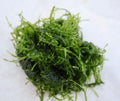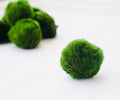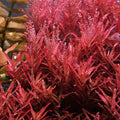Top 5 Most Beneficial Snails for Your Freshwater Aquarium
Aquarium snails aren't everyone's cup of tea, but we adore them due to the significant role they play in the underwater ecology. They act as detritivores, clearing the tank of organic waste including discarded fish food, decomposing plant leaves, algae, and even dead animals.
Top 5 Most Beneficial Snails for Your Freshwater Aquarium
We've compiled a list of the top 5 freshwater snails we like to keep to help you appreciate these incredible critters. With the exception of the last one, most of these snails are absolutely safe with aquarium plants.
1. Bladder Snail
This common snail belongs to the Physidae family and is distinguished by its spotted, bulbous brown shell. They maintain a relatively modest size of less than 1 inch (2.5 cm), making them suitable for cleaning your tank's crevices.
Bladder snails and larger pond snails, which may reach lengths of 2-3 inches (5-8 cm) and enjoy consuming aquarium plants, are occasionally mistaken for one another. They don't care about the pH or temperature of the water and can handle a wide range of conditions.
Since they can fertilize themselves, they are simultaneously hermaphrodites and are often referred to as "pest snails." The eggs are found on the tank walls, plants, and other surfaces and resemble tiny white spots enclosed in a blob of clear jelly.
You might be overfeeding the aquarium if bladder snail populations suddenly explode. Reduce the amount of food added to the tank, control the growth of algae, and vacuum the gravel more frequently to get rid of extra organics.
The snail population will stabilize as the food supplies run out. Read the complete article for further advice on controlling your snail colony.
2. Nerite Snail
The Neritidae family of snails is well renowned for producing some of the greatest freshwater aquarium hobbyist algae eaters, including those that can consume green spot algae.
They come in a variety of shapes and sizes, including olive, zebra, red racer, tiger, and horned nerite snails, and measure between 0.5 and 1.5 inches (1.3 and 3.8 cm). Because they have a tendency to flee, keep a tight lid on your aquarium.
Additionally, they may starve to death if the tank does not have enough algae. Add Zoo Med Nano Banquet Food Blocks, blanched zucchini slices, and canned green beans to their meal to round out their nutrition.
Nerite snails, in contrast to other snails, have a very high resistance to salt and are accustomed to reproducing in brackish water. There is no need to be concerned about their reproducing out of control, even if you notice them depositing white, sesame-like egg capsules on the tank's décor or walls.
3. Ramshorn Snail
This lovely Planorbidae family snail is distinguished by its unusual shell, which resembles a coil of ram's horn. They can reach a height of 1-2 inches (2.5–5 cm) and are available in a variety of attractive hues, including brown, gold, gray-blue, and pink.
By eating any algae, fish food, and melting plant leaves they come across, these adorable gastropods will gladly clean up your aquarium. They are simultaneous hermaphrodites, possessing both male and female sexual organs at the same time, like the bladder snail. Their eggs look like the eggs of bladder snails. They are small dots covered with a thick layer of clear gelatin.
4. Mystery Snail
The popular South American snail Pomacea bridgesii has a diameter of 2 to 2.5 inches (5 to 6 cm). In contrast to certain larger Pomacea species, like the Peruvian apple snail and the enormous apple snail, they are safe among plants.
Most pet stores sell a variety of colors, including ivory, yellow gold, jade, blue, brown, purple, and magenta. They exhibit numerous unique behaviors, including ascending to the top of the tank and "parachuting" down, and are relatively fast and active for a snail.
They may also be seen lying down close to the water's surface, stretching their siphons, and taking in air to allow water to pass over their gills.
The male and female of a mystery snail can be distinguished by holding the snail's shell so that its foot is vertical, as if it were climbing a wall. Mystery snails are not hermaphrodites.
You can notice that a female snail has two holes on each of her shoulders, whereas a male snail just has one hole on his left shoulder as the snail stretches its body out of the shell.
The female fish rises to the surface to spawn, where she scatters her eggs above the water. Their huge egg cluster can be removed if no babies are wanted, making it relatively simple to manage their population.
5. Assassin Snail
The Southeast Asian snail Anentome Helena is about 1 inch (2.5 cm) long and has a pointed, rough shell with lovely bumblebee-like brown and yellow stripes.
The assassin snail is a carnivore that prefers to consume other snails, in contrast to the other detritivores on this list. It prefers digging burrows in the earth and emerging when prey is spotted, just like the MTS. They are frequently used by aquarists to get rid of smaller snails like Malaysian trumpet, bladder, and ramshorn snails.
On the other hand, groups of assassin snails can eliminate snails that are much bigger than themselves. They will also opportunistically graze on fish food, worms, and dead animals if all the snails are gone.
The breeding rate of assassin snails is lower than that of other snails since they are not hermaphrodites. They lay single-egg capsules that are transparent and square in shape. Local fish shops will frequently buy any extra assassin snails you produce since they are so effective at controlling pest snail populations.
Snails are such wonderful members of the cleanup team because they aid in further converting organic matter into nutrients that aquatic plants may use. Check out our list of snails here at Aquafy to purchase your own aquarium inhabitants.
















